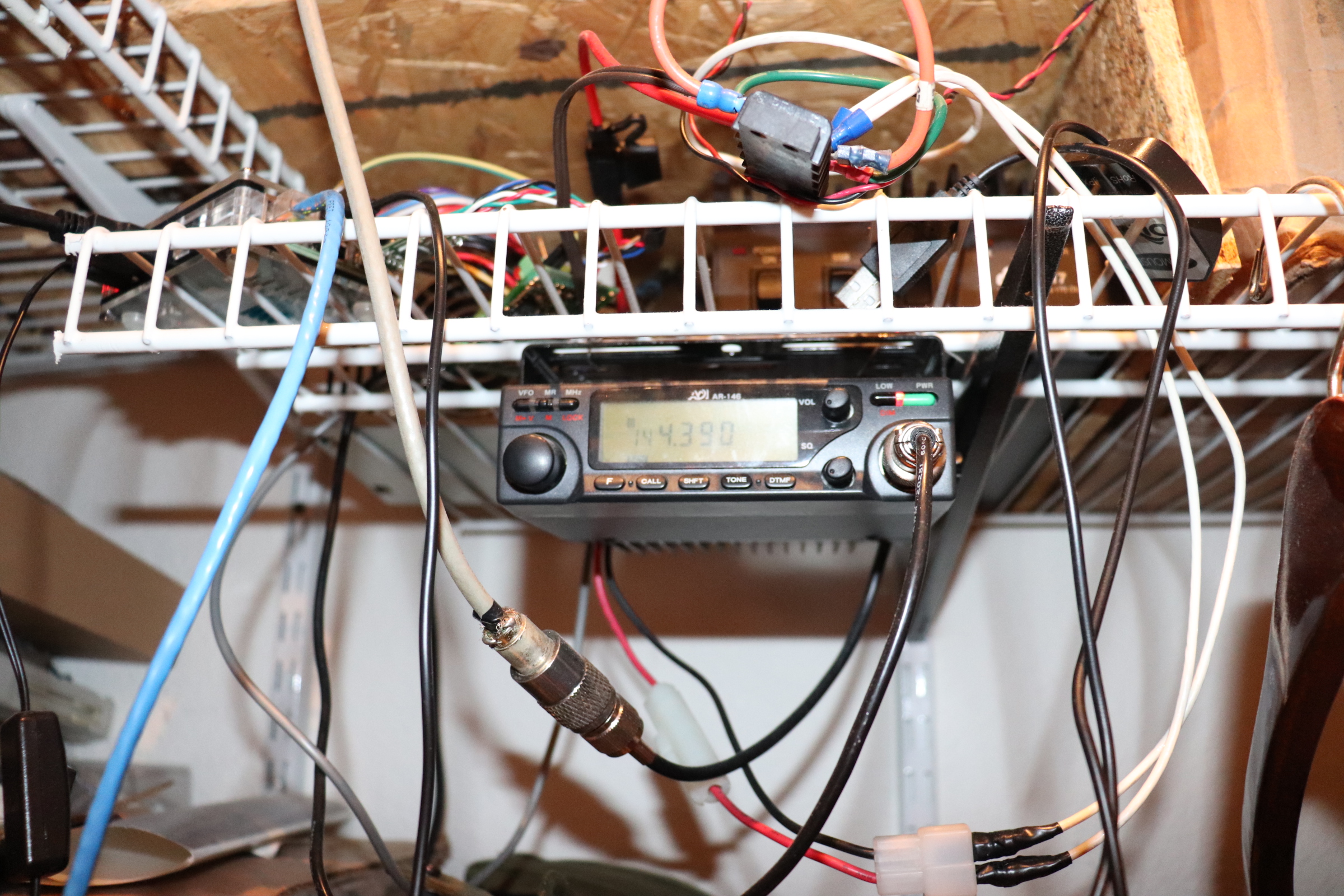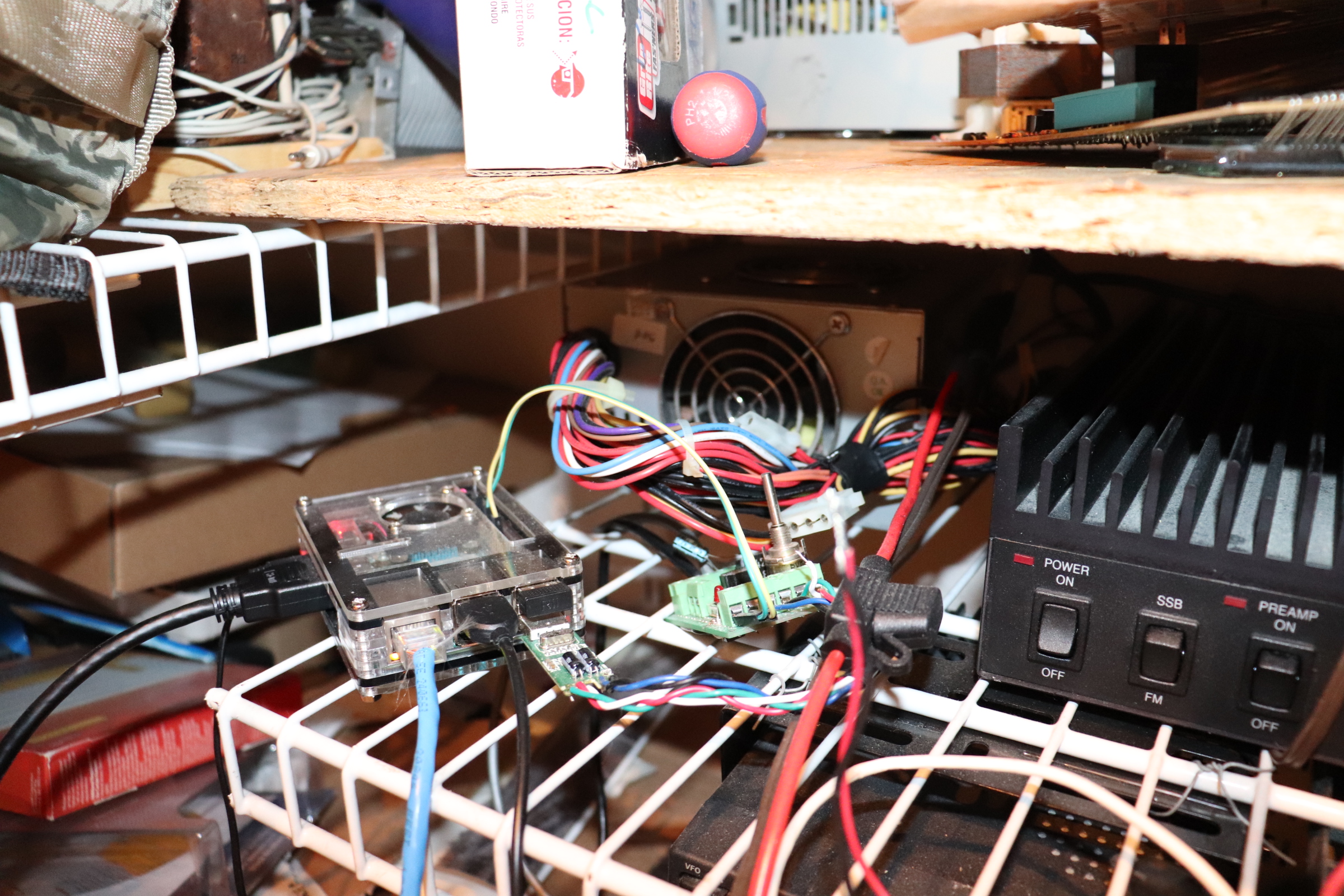KG5ZSU
![]()
APRS Setup
Scroll down to see the updates—they’re in order of occurrence
If you live in North Texas, you might have noticed that there is
a severe lack of APRS digipeaters in-between Texarkana and the western side
of Sulphur Springs. In an effort to fill the gap, I created an APRS digipeater in early 2020.
Since this time, the system has been repurposed as a LinBPQ node, details about this setup can be found here.
*********************************
THE OLD SETUP:
The current setup using a ¼ wave antenna at about 20’, a 50 watt mobile rig, and a Raspberry Pi 3B, all connected
to a single point ground on a dedicated shelf is much improved over the original system.
I’m happy with its performance so far, and hope to install a bigger antenna in the near future
in hopes of making it even better.
It started out as a UV-5R connected to a dipole in the attic, with Direwolf Soundcard TNC running on a Raspberry PI B.
The radio was powered from a battery eliminator wired into an old wall-wart.
It had only digipeater and I-gate capabilities.
The next upgrades came with the donation of an ADI 2M radio, which I wired
to a modified PC power supply. This was connected to a ½ wave J-pole, also in the attic,
and a slightly upgraded PTT/audio interface which was connected to the Raspberry PI.
I hoped to have the APRS-IS to RF gateway configured correctly,
but I found out later that it was not, and only the digipeater and I-gate were functioning.

Here is the transceiver and its connections.
I then fixed the configuration problems with Direwolf and had a full-featured I-gate, digipeater,
and APRS-IS to RF gateway. This allowed my station to pull packets from the internet and transmit
them on RF, including those packets created by local stations using only APRS-IS
enabled clients, such as APRSDroid.
But I didn’t stop there. I made a few of the upgrades I had been dreaming of,
and now the Raspberry PI B has been swapped out for a PI 3B, running Raspbian
with a graphical desktop. I usually have Xastir or YAAC running on this machine—connected to a screen,
of course—so I can keep track of what stations my digipeater hears, in addition to providing
me with full APRS messaging capabilities.

The brains of the APRS system.
(The 2m amp doesn’t work—it’s just for pretty…)
I also configured DireWolf’s APRS TouchTone system, and have used it quite
a few times. It is especially useful for quick checks of the system.
JULY 2021:
The 12v power supply has failed, and the APRS digipeater is offline. I am working to restore the system to normal operation, but I have several upgrades in progress that may push the reactivation date to the end of the month. I am sorry for any inconvenience the inconsistent coverage has caused and hope to have it operating as much as possible on a back-up power supply.
END OF JULY UPDATE:
Things are going much more slowly then I had hoped. I’m down to one (yes, one) power supply, and it usually powers my primary radio. Until I get a replacement of some sort, I’m afraid the digi will remain off-line. If I have caused an inconvenience, let me know. That way I know somebody was using it!
JANUARY 2022:
It took awhile, but the Raspberry PI-based setup is back up and running. The antenna is a J-pole, still located in the attic, and I’m using a Ledmo (I think?) power supply from Amazon.com. It throws out some RFI, but thankfully not on 144.39. I have this connected to a small UPS/surge protector so the PI doesn’t get knocked out instantly by a power outage. I have most of the parts to move the antenna, so that’s the next scheduled upgrade. The cheap USB soundcard and Direwolf is working just fine—I think.
Last Update: March 2023.